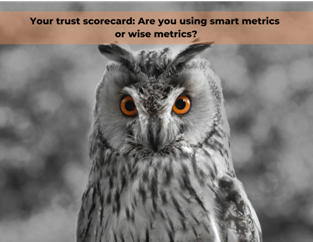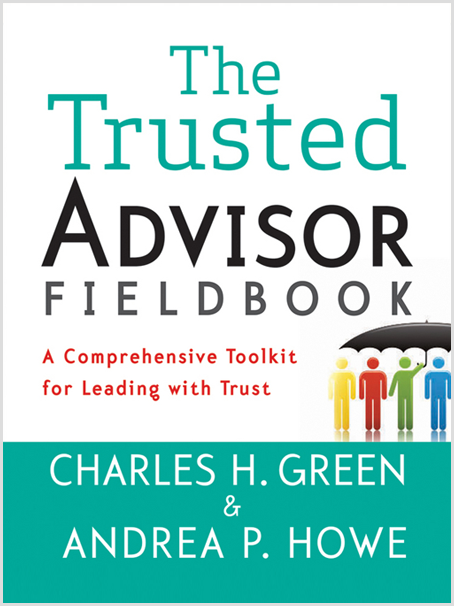This post is part of our Weekly Tips series.
 I’m on a culture kick the last few weeks, as it’s been a hot topic of conversation with clients lately. This week’s tip focuses on the problem with using conventional measures to figure out whether organization-wide trust initiatives are working, and what to do about it.
I’m on a culture kick the last few weeks, as it’s been a hot topic of conversation with clients lately. This week’s tip focuses on the problem with using conventional measures to figure out whether organization-wide trust initiatives are working, and what to do about it.
In short, there’s a difference between smart metrics, and wise metrics.
For the values and virtues of a trust-based organization to stick, people have to adopt—and act from—higher-order mindsets and principles. These aren’t so easy to gauge with the usual scorecards for managing operations.
Imagine telling your spouse you want to be a better partner. You suggest weekly measurements of spousal performance, using a scale of 1 to 10, along with rewards for achieving and exceeding those metrics. Now, imagine the reaction.
A clinical focus applied to something as complex as a long-term personal partnership seems obviously off-base. Why should it be any less off-base for a trust initiative in an organization?
Here are some alternatives:
- Look for evidence of being lived on a daily basis. Do people acknowledge and celebrate trustworthy behavior? Do they hold each other accountable for it?
- Listen for the language that’s used. Do employees talk about the organization as “we” or “they?” Do people speak about customers with appreciation and respect? Do they speak about leaders that same way?
- Seek qualitative feedback. Interview clients, talk to vendors, and make it safe for employees to be candid about their experience of the organization. What are they saying?
- Invest in doing the right thing. Evaluate opportunities in terms of the big picture, not just the quarterly return. Make decisions that align with your company’s values, period.
- Focus on intrinsic rewards. Provide employees with autonomy, opportunities for mastery, and a sense of purpose.
A different kind of culture—a culture of trust—requires a different kind of scorecard.
Make It Real
This week, do a mini-assessment of your organization (be it a team, a department, a business unit, or bigger). How do you fare on the elements in this tip?
Learn More

Read about how the best leaders build trust, from our friends at Trusted Advisor Associates, or find a more detailed organizational assessment in Chapter 29 of The Trusted Advisor Fieldbook.
Andrea Howe
Latest posts by Andrea Howe (see all)
- Why choosing silence in the face of awkwardness can be a trust tragedy - March 21, 2024
- What NOT to do when you think you’re being ghosted - February 21, 2024
- Reprise: If you’ve resolved to have better client relationships this year, great, now ditch your resolution - January 2, 2024
